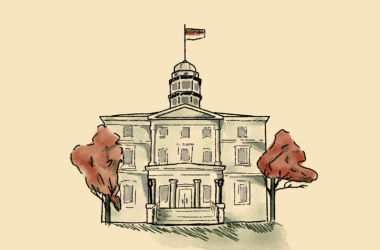When you think of a street, what do you visualize? You might imagine an arterial road like Sherbrooke or René-Lévesque, with two lanes for cars in both directions while pedestrians are relegated to small sidewalks. Or, you might think of something more like Mont-Royal and Prince-Arthur, streets with a balance between cars, cyclists, and pedestrians. Streets like these represent a legacy of what cities looked like for the first half of the 20th century––something many major cities are trying to recreate with 15-minute cities, an urban planning concept in which all of your daily needs can be met within 15 minutes by walking, cycling, or public transportation. However, these changes have opened a broader discussion about urbanism. For example, this has sparked two new satirical anti-15-minute city clubs: McGill Students Against 15 Min Cities and McGill Suburbanism Club. Online, right-wing internet phenoms have purposefully spread disinformation about 15-minute cities to undermine the potential of this future for urban planning when in reality, 15-minute cities are vital to a sustainable and equitable future.
The term was first popularized by Carlos Moreno, an urbanist and chief advisor to Paris’ Mayor Anne Hidalgo, who has radically embraced the 15-minute city in anticipation for the 2024 Paris Olympics. Paris has added hundreds of kilometres of bike lanes and pedestrianized large swathes of the city in recent years, and aims to plant 170,000 trees by 2026. After initial hesitation to Hidalgo’s urbanism, Parisians liked the changes enough to re-elect her for another six year term in 2020.
Montreal has undergone similar widespread change under Valérie Plante’s leadership, aiming to de-incentivize driving and encourage cycling, walking and taking public transportation. Despite being healthier, cheaper and more sustainable, these modes of transportation have come under attack from local residents’ associations in Montreal. Despite cars continuing to dominate public space and the limited area allocated to pedestrians and cyclists in the city centre, drivers are still dissatisfied. To them, these changes to make Montreal more accessible have only added delays, taken away parking spots, and created inconsistent commute times.
What opponents of the 15-minute city fail to understand is that driving is only discouraged for short trips within the neighbourhood. Jordan Peterson, an infamous professor of psychology at the University of Toronto, has called the 15-minute city a World Economic Forum conspiracy that is led by “idiot tyrannical bureaucrats” who want to track everywhere you go and dictate where you are allowed to drive. Clearly, Peterson has never been in the suburbs without a car––a reality where you are actually trapped. Unfortunately for Peterson, he is unable to experience such a luxury as he lives in Seaton Village, a neighbourhood in Toronto that embodies the principles of the 15-minute city.
The 15-minute city goes beyond promoting more sustainable modes of transportation. They encourage healthy and active lifestyles for all ages. Streets without cars are much safer for children, and ultimately promote a greater sense of freedom for all. Lower-income people are much less likely to own a car and walkable cities help create more equitable living circumstances by offering more universally accessible services and opportunities.
Walkable cities are a win-win proposition. By ditching cars, people are more likely to spend money on local establishments—making pedestrianized areas consistently more financially productive than non-pedestrianized areas, which in turn provides significantly more tax income for cities. It is undeniable that being able to walk in your own neighborhood fosters a greater sense of community and improves mental well-being. Prioritizing this approach over gentrification creates a kind of health, community and individual, that supplements the democracy of our cities.
It’s time we stop framing the 15-minute city as a war on the car, but rather as a way to rebalance the many modes of transportation we have to create healthier, sustainable and more equitable cities for all.







